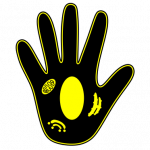About
Motivation
According to the Student Accessibility Coordination (CAE), there are currently 53 visually impaired students in undergraduate courses at UFSC, including 44 with visual impairment-low vision, 9 with visual impairment-blindness and 2 with deafblindness. However, in biological and health courses, there are only 10 students with impairment-low vision and one student with visual impairment-blindness. Does the low number of students with visual impairment in these areas result from the lack of preparation for the courses, such as a shortage of adequate didactic material for the visually impaired?
Outside UFSC, the inclusion of visual impaired people in Brazilian schools is also insufficient. According to the Ministry of Education, in 2007 there were 654,606 students enrolled in basic education, with only 1.2% having some kind of disability, and only 4 out of 10 disabled students attended school.
Studies on the presence of the visually impaired in state primary schools indicate the lack of adequate teacher training and the absence of didactic material as the main difficulties encountered for the inclusion of these students. Thus, the need for production of didactic materials adapted for the teaching of students with visual impairment-low and visual impairment-blindness is testified.
Goals
Research, develop and make models, matrices and makeup with different textures of cells and tissues that compose animal organs for students with visual deficiencies (blind and low vision) who are attending elementary and higher education.
Expected results
The developed didactic materials will be gathered in an Atlas of Histology, in the e-book format, with the morphological description in Braille and text of the represented structures. In addition, the atlas will present step by step the preparation of the materials. Atlas, matrices, drawings with contrasting colors and 3D models will be made public and available on the project website, next to the UFSC website and on social networks such as Instagram and Facebook, so that all interested parties can access and use them, increasing the number of people with access to the results of this project.






